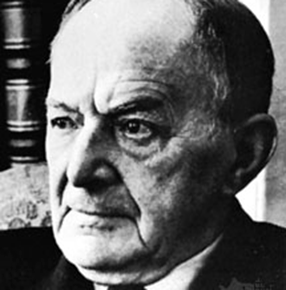The Listeners
‘Is there anybody there?’ said the Traveller,
Knocking on the moonlit door;
And his horse in the silence champed the grasses
Of the forest’s ferny floor:
And a bird flew up out of the turret,
Above the Traveller’s head:
And he smote upon the door again a second time;
‘Is there anybody there?’ he said.
But no one descended to the Traveller;
No head from the leaf-fringed sill
Leaned over and looked into his grey eyes,
Where he stood perplexed and still.
But only a host of phantom listeners
That dwelt in the lone house then
Stood listening in the quiet of the moonlight
To that voice from the world of men:
Stood thronging the faint moonbeams on the dark stair,
That goes down to the empty hall,
Hearkening in an air stirred and shaken
By the lonely Traveller’s call.
And he felt in his heart their strangeness,
Their stillness answering his cry,
While his horse moved, cropping the dark turf,
’Neath the starred and leafy sky;
For he suddenly smote on the door, even
Louder, and lifted his head:—
‘Tell them I came, and no one answered,
That I kept my word,’ he said.
Never the least stir made the listeners,
Though every word he spake
Fell echoing through the shadowiness of the still house
From the one man left awake:
Ay, they heard his foot upon the stirrup,
And the sound of iron on stone,
And how the silence surged softly backward,
When the plunging hoofs were gone.
This poem is in the public domain. Published in Poem-a-Day on October 30, 2022, by the Academy of American Poets.
“The Listeners” was first published in The Listeners and Other Poems (Constable and Company, 1912). In “Thee, Thou, Twixt,” a review of Reading Walter de la Mare (Faber & Faber, 2021) that appeared in the London Review of Books vol. 44, no. 6 (March 24, 2022), poet and critic Mark Ford writes, “Like much of de la Mare’s best work, ‘The Listeners’ both stimulates and evades the urge to impose on it a coherent and clarifying interpretation, leaving the reader as ‘perplexed’ as its protagonist, as haunted as its ‘lone house’. Time and again he was called on to explain what his signature poem was really about, to which he would reply that ‘every poem, of course, to its last syllable is its meaning,’ or variations thereof.” One of de la Mare’s best-known and most frequently anthologized poems, it was also admired by many of his contemporaries, including Robert Frost, who, according to William Wootten in Reading Walter de la Mare, was drawn to the poem’s prosody. As Wootten writes, “What had caught Frost’s attention is the poem’s curious double metre. Depending on how one performs them, it is possible to scan almost all its lines either with three stresses or with four.”

